I've implemented multiple variations of Steep Parallax, Relief and Parallax Occlusion mappings, and they all have a bug of only working correctly in one direction. Which leads me to believe the problem is one of the values being calculated outside of Parallax mapping. I cannot figure out what is wrong.
Here's a cube with Parallax mapping from different angles, as you can see Parallax effect is correct on only one side of the cube:

Here is the GLSL code that is used:
Vertex shader:
layout(location = 0) in vec3 vertexPosition;
layout(location = 1) in vec3 vertexNormal;
layout(location = 2) in vec2 textureCoord;
layout(location = 3) in vec3 vertexTangent;
layout(location = 4) in vec3 vertexBitangent;
out vec3 eyeVec;
out vec2 texCoord;
uniform vec3 cameraPosVec; // Camera's position
uniform mat4 modelMat; // Model matrix
void main(void)
{
texCoord = textureCoord;
fragPos = vec3(modelMat * vec4(vertexPosition, 1.0));
// Compute TBN matrix
mat3 normalMatrix = transpose(inverse(mat3(modelMat)));
TBN = mat3(normalMatrix * vertexTangent,
normalMatrix * vertexBitangent,
normalMatrix * vertexNormal);
eyeVec = TBN * (fragPos - cameraPosVec);
}
Fragment shader:
layout(location = 1) out vec4 diffuseBuffer;
// Variables from vertex shader
in vec3 eyeVec;
in vec3 fragPos;
in vec2 texCoord;
uniform sampler2D diffuseTexture;
uniform sampler2D heightTexture;
vec2 parallaxOcclusionMapping(vec2 p_texCoords, vec3 p_viewDir)
{
// number of depth layers
float numLayers = 50;
// calculate the size of each layer
float layerDepth = 1.0 / numLayers;
// depth of current layer
float currentLayerDepth = 0.0;
// the amount to shift the texture coordinates per layer (from vector P)
vec2 P = p_viewDir.xy / p_viewDir.z * 0.025;
return p_viewDir.xy / p_viewDir.z;
vec2 deltaTexCoords = P / numLayers;
// get initial values
vec2 currentTexCoords = p_texCoords;
float currentDepthMapValue = texture(heightTexture, currentTexCoords).r;
float previousDepth = currentDepthMapValue;
while(currentLayerDepth < currentDepthMapValue)
{
// shift texture coordinates along direction of P
currentTexCoords -= deltaTexCoords;
// get depthmap value at current texture coordinates
currentDepthMapValue = texture(heightTexture, currentTexCoords).r;
previousDepth = currentDepthMapValue;
// get depth of next layer
currentLayerDepth += layerDepth;
}
// -- parallax occlusion mapping interpolation from here on
// get texture coordinates before collision (reverse operations)
vec2 prevTexCoords = currentTexCoords + deltaTexCoords;
// get depth after and before collision for linear interpolation
float afterDepth = currentDepthMapValue - currentLayerDepth;
float beforeDepth = texture(heightTexture, prevTexCoords).r - currentLayerDepth + layerDepth;
// interpolation of texture coordinates
float weight = afterDepth / (afterDepth - beforeDepth);
vec2 finalTexCoords = prevTexCoords * weight + currentTexCoords * (1.0 - weight);
return finalTexCoords;
}
void main(void)
{
vec2 newCoords = parallaxOcclusionMapping(texCoord, eyeVec);
// Get diffuse color
vec4 diffuse = texture(diffuseTexture, newCoords).rgba;
// Write diffuse color to the diffuse buffer
diffuseBuffer = diffuse;
}
The code is literally copy-pasted from this tutorial
P.S. Inverting different values (x,y,z) of eyeVar vector (after transforming it with TBN matrix), changes the direction at which parallax works. For instance, inverting the X component, makes it parallax work on polygons facing upwards:

which suggests that there might be a problem with tangents/bitangents or the TBN matrix, but I have not found anything. Also, rotation the object with a model matrix does not affect the direction at which the parallax effect works.
EDIT:
I have fixed the issue by changing how I calculate tangents/bitangents, moving the viewDirection calculation to the fragment shader, and by not doing the matrix inverse for TBN for just this one calculation. See the newly added shader code here:
Vertex shader:
out vec3 TanViewPos;
out vec3 TanFragPos;
void main(void)
{
vec3 T = normalize(mat3(modelMat) * vertexTangent);
vec3 B = normalize(mat3(modelMat) * vertexBitangent);
vec3 N = normalize(mat3(modelMat) * vertexNormal);
TBN = transpose(inverse(mat3(T, B, N)));
mat3 TBN2 = transpose((mat3(T, B, N)));
TanViewPos = TBN2 * cameraPosVec;
TanFragPos = TBN2 * fragPos;
}
Fragment shader:
in vec3 TanViewPos;
in vec3 TanFragPos;
void main(void)
{
vec3 viewDir = normalize(TanViewPos - TanFragPos);
vec2 newCoords = parallaxOcclusionMapping(texCoord, viewDir);
}
Regarding the tangent/bitangent calculation, I previously used ASSIMP to generate them for me. Now I've written code to manually calculate tangents and bitangents, however my new code generates "flat/hard" tangents (i.e. same tangent/bitangent for all 3 vertices of a triangle), instead of smooth ones. See the difference between ASSIMP (smooth tangents) and my (flat tangents) implementations:

The parallax mapping now works in all directions:

However, this now introduces another problem, which makes all the rounded objects have flat shading (after performing normal mapping):

Is this problem specific to my engine (i.e. a bug somewhere) or is this a common issue that other engines somehow deal with?